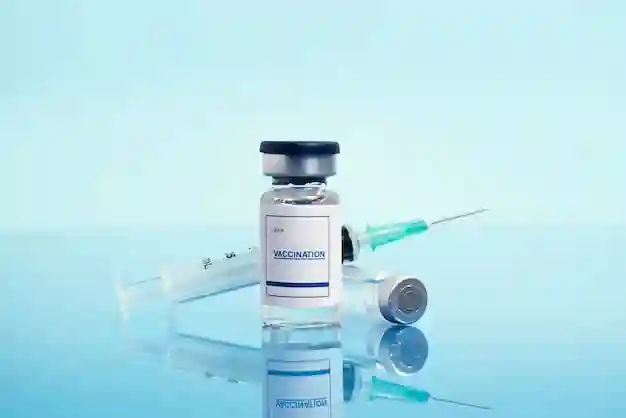Vaccines are composed of various components that work together to stimulate the immune system to recognize and fight specific pathogens. The primary components of vaccines include:
- Antigens: These are the main active ingredients in vaccines. They can be parts of the virus or bacteria (such as proteins or sugars) or the whole pathogen in a weakened or inactivated form. Types of antigens include:
- Inactivated or killed organisms: Pathogens that have been killed and cannot cause disease (e.g., inactivated polio vaccine).
- Live attenuated organisms: Pathogens that have been weakened so they cannot cause serious disease in people with normal immune systems (e.g., measles, mumps, and rubella (MMR) vaccine).
- Subunit or conjugate vaccines: These contain parts of the pathogen, such as proteins or sugars, but not the whole germ (e.g., HPV vaccine, hepatitis B vaccine).
- Toxoids: Inactivated toxic compounds from bacteria that cause illness (e.g., tetanus and diphtheria vaccines).
- Adjuvants: These are substances added to some vaccines to enhance the immune response. They help to create a stronger and longer-lasting immunity. An example is aluminum salts.
- Stabilizers: These help to maintain the vaccine’s effectiveness during storage. They protect the vaccine from adverse conditions such as heat and light. Examples include sugars (e.g., sucrose), amino acids (e.g., glycine), and proteins (e.g., gelatin).
- Preservatives: These are added to multi-dose vials of vaccines to prevent contamination and growth of bacteria or fungi. A common preservative is thimerosal, which contains a form of mercury. It is used in very small amounts and has been extensively studied for safety.
- Diluent: This is a liquid, usually sterile saline or water, used to reconstitute a freeze-dried vaccine. It ensures that the vaccine is in the proper form for administration.
- Residuals from manufacturing processes: These are trace amounts of substances used during the production of the vaccine, such as formaldehyde (used to inactivate the virus), antibiotics (to prevent bacterial contamination during production), or egg proteins (in vaccines produced using eggs).

The efficacy and safety of the vaccines across the world population is required to be evaluated. In this aspect the Global clinical trials play a crucial role in the clinical evaluation of the vaccines in the target populations, development and distribution of vaccines, ensuring their safety and efficacy across diverse populations. By conducting global clinical trials, researchers can gather data from various demographic groups, which helps in understanding how vaccines perform under different genetic, environmental, and lifestyle conditions. These trials facilitate the rapid identification of potential side effects and effectiveness in preventing diseases across multiple regions. Ultimately, global clinical trials contribute to the creation of vaccines that are universally effective, boosting global health security and preparedness against infectious diseases.
Vaccines provide numerous advantages both at an individual and a societal level. Here are some key benefits:
Individual Benefits:
- Disease Prevention: Vaccinesprotect individuals from infectious diseases that can cause serious illness or death. They work by stimulating the immune system to recognize and fight specific pathogens.
- Reduction in Disease Severity: If a vaccinated person does get infected, the disease is often less severe than it would be in an unvaccinated person.
- Long-term Protection: Many vaccinesprovide long-lasting immunity, reducing the need for ongoing treatments or medications for the diseases they prevent.
- Reduced Healthcare Costs: Preventing diseases through vaccination can save individuals significant amounts of money by avoiding the costs associated with treatment and hospitalization.
- Protection for Travelers: Vaccinescan protect travelers from diseases prevalent in other parts of the world, which they may not have been exposed to in their home countries.
Societal Benefits:
- Herd Immunity: When a significant portion of a population is vaccinated, it helps protect those who cannot be vaccinated, such as infants, elderly individuals, or those with certain medical conditions. This reduces the overall spread of disease within the community.
- Eradication and Control of Diseases: Vaccination programs have led to the eradication of smallpox and the significant reduction of other diseases like polio and measles. Continued vaccination efforts can lead to the potential eradication of other infectious diseases.
- Economic Benefits: Reducing the incidence of disease through vaccination decreases the economic burden on healthcare systems, increases productivity, and reduces absenteeism from work or school.
- Public Health Preparedness: Widespread vaccination can help prevent or mitigate the impact of pandemics and epidemics, enhancing public health preparedness and response capabilities.
Vaccines are thus essential tools in public health, providing effective protection against numerous infectious diseases. By stimulating the immune system to recognize and combat pathogens, vaccines significantly reduce illness, disability, and death worldwide. Their widespread use is critical in controlling and eventually eradicating diseases, highlighting the importance of ongoing vaccination programs and public trust in their safety and efficacy.



